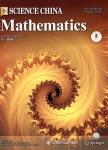A two-level method for sparse time-frequency representation of multiscale data Dedicated to Professor LI TaTsien on the Occasion of His 80th Birthday
A two-level method for sparse time-frequency representation of multiscale data Dedicated to Professor LI TaTsien on the Occasion of His 80th Birthday作者机构:Department of Mathematics Jinan University Yau Mathematical Sciences Center Tsinghua University Department of Computing and Mathematical Sciences California Institute of Technology
出 版 物:《Science China Mathematics》 (中国科学:数学(英文版))
年 卷 期:2017年第60卷第10期
页 面:1733-1752页
核心收录:
学科分类:0711[理学-系统科学] 07[理学] 08[工学] 080401[工学-精密仪器及机械] 0804[工学-仪器科学与技术] 080402[工学-测试计量技术及仪器] 0701[理学-数学]
基 金:supported by National Science Foundation of USA (Grants Nos. DMS1318377 and DMS-1613861) National Natural Science Foundation of China (Grant Nos. 11371220, 11671005, 11371173, 11301222 and 11526096)
主 题:sparse representation time-frequency analysis matching pursuit two-level method end effects
摘 要:Based on the recently developed data-driven time-frequency analysis(Hou and Shi, 2013), we propose a two-level method to look for the sparse time-frequency decomposition of multiscale data. In the two-level method, we first run a local algorithm to get a good approximation of the instantaneous frequency. We then pass this instantaneous frequency to the global algorithm to get an accurate global intrinsic mode function(IMF)and instantaneous frequency. The two-level method alleviates the difficulty of the mode mixing to some *** also present a method to reduce the end effects.



